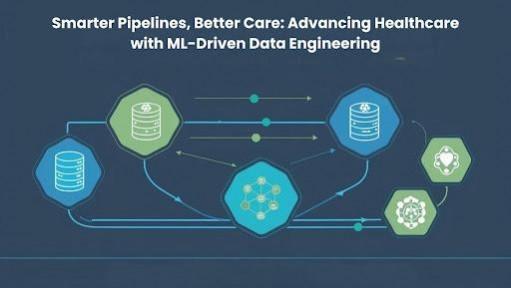
Written by a seasoned expert in health informatics and machine learning, this article by Nishanth Joseph Paulraj outlines a transformative approach to data engineering in clinical settings. The author brings both depth and pragmatism to addressing one of healthcare's most intricate challenges: how to handle and extract meaning from complex, sensitive data.
The Complexity of Healthcare Data
Healthcare data is notoriously difficult to manage. It spans high-dimensional patient records, unstructured clinical notes, genomic sequences, and varied laboratory metrics. Compounding this complexity are missing values, time-sensitive events, and strict privacy laws like HIPAA and GDPR. The solution? A layered architecture that orchestrates data ingestion, processing, predictive modeling, and model lifecycle management into a coherent pipeline.
Smart Ingestion at Scale
The first layer data ingestion is where the foundation is laid. By utilizing FHIR-compatible APIs and the computational muscle of Apache Spark, the system captures data from diverse clinical systems and sequencing platforms. What's impressive here is the level of validation and consistency built into the process. With the help of Delta Lake, the pipeline ensures that data integrity is never compromised. Its support for ACID transactions and versioned access allows for both real-time processing and retrospective analysis.
Transforming Data for Actionable Insight
After ingestion, data enters the processing layer for cleaning, transformation, and feature engineering. Apache Spark and Delta Lake manage large, variable datasets efficiently while supporting schema updates and audit requirements. Crucially, the pipeline preserves temporal dynamics, capturing not only static snapshots but the continuous progression of patient health for meaningful clinical insights.
Predictive Power Through Tailored Models
The modeling layer uses machine learning to generate predictive insights. Gradient boosting ensures accuracy and interpretability, while PyTorch-based deep learning handles unstructured data like genomics. Models are tailored for healthcare, addressing class imbalance, sensitivity, and stringent validation needs.
Managing Models Like Medical Assets
Model deployment is an ongoing process. The management layer, using MLflow, ensures version control, performance monitoring, and retraining. It detects model drift and updates accordingly, maintaining accuracy as clinical data evolves. This makes the system resilient and adaptable to new protocols or patient trends. Seamless integration with clinical workflows ensures predictions enhance, not replace, medical decision-making.
Tackling Sepsis: A Use Case in Early Detection
Among the critical applications of this framework is the early prediction of sepsis, a condition where timely intervention can be the difference between life and death. The pipeline combines data from vital signs, lab results, medications, and patient demographics to deliver continuous risk scores. These scores are tuned to maximize sensitivity and minimize false negatives making them vital tools for alerting clinicians before visible symptoms appear.
Innovation in Genomic Deep Learning
The pipeline extends its capabilities to the genomics domain, where deep learning models analyze sequence-based data. Convolutional neural networks, optimized for biological pattern recognition, perform variant classification with exceptional accuracy. Techniques like mixed-precision training and dynamic computation graphs allow these models to run efficiently on massive genomic datasets. This opens the door to advanced genomic diagnostics and personalized medicine without sacrificing performance or interpretability.
Building for Compliance and Trust
Beyond technical brilliance, the pipeline is built for trust. Data governance, role-based access control, and comprehensive audit logs ensure that the entire system aligns with healthcare regulations. Importantly, explainability is not an afterthought. Tools like SHAP values and case-based reasoning provide clinicians with transparent, interpretable model outputs that support real-world decision-making.
In conclusion, This article by Nishanth Joseph Paulraj makes it clear: building intelligent, scalable, and compliant data pipelines is no longer optional in modern healthcare. With a thoughtful blend of technical architecture and clinical sensibility, the proposed system serves not just algorithms but ultimately, patients and providers alike.









